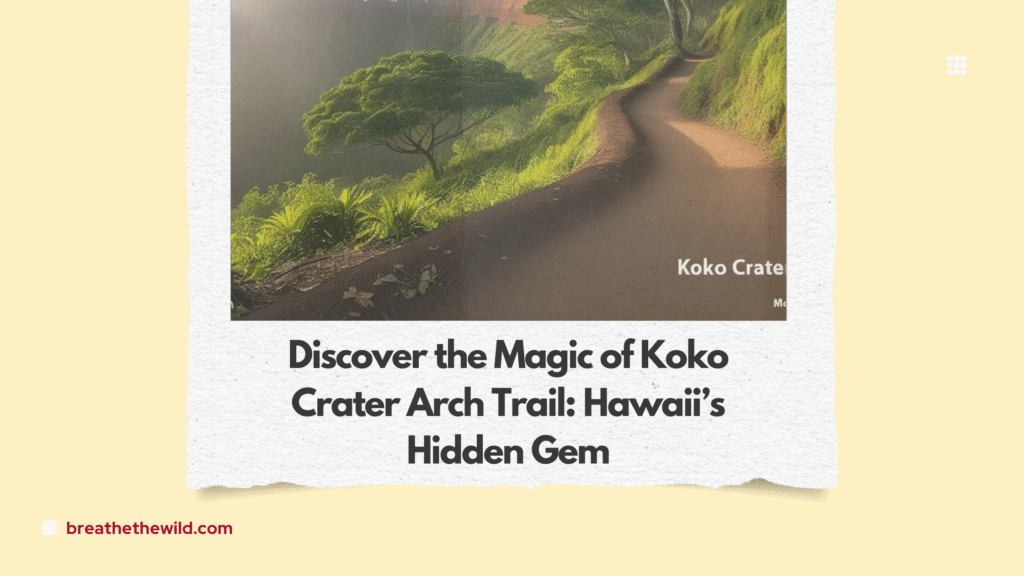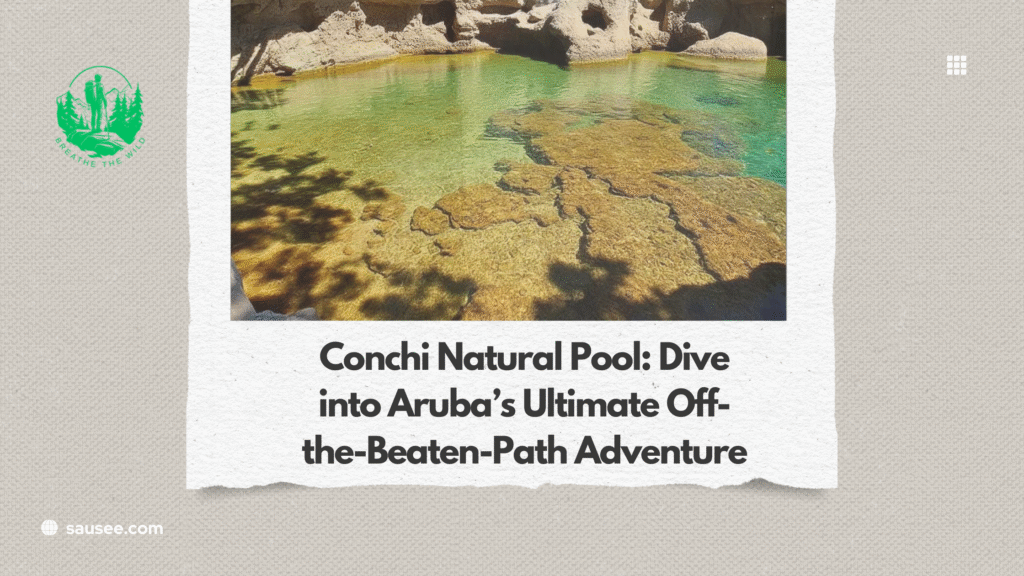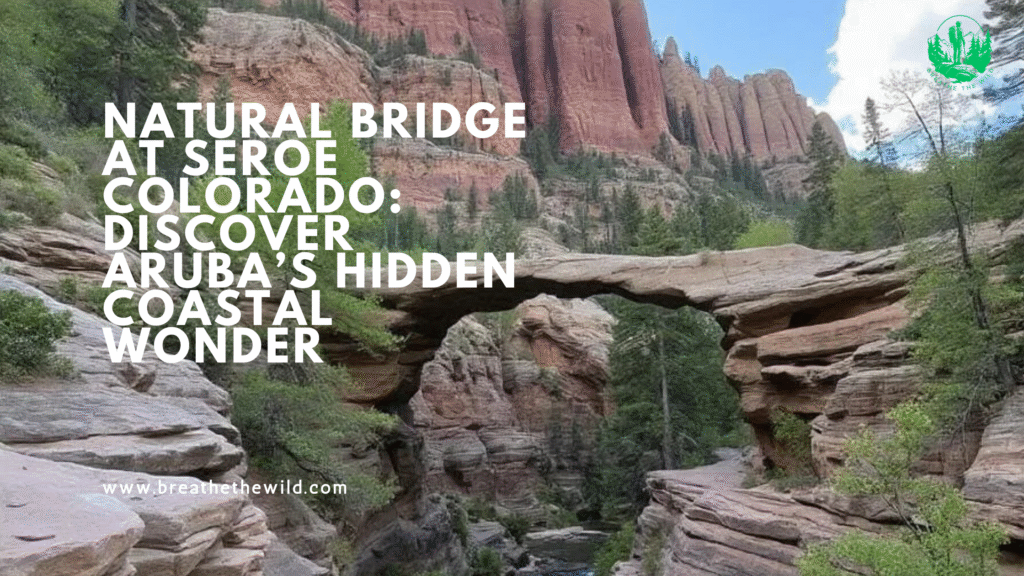Table of Contents
Introduction: Why the Koko Crater Arch Trail Is a Must-Do in Oahu
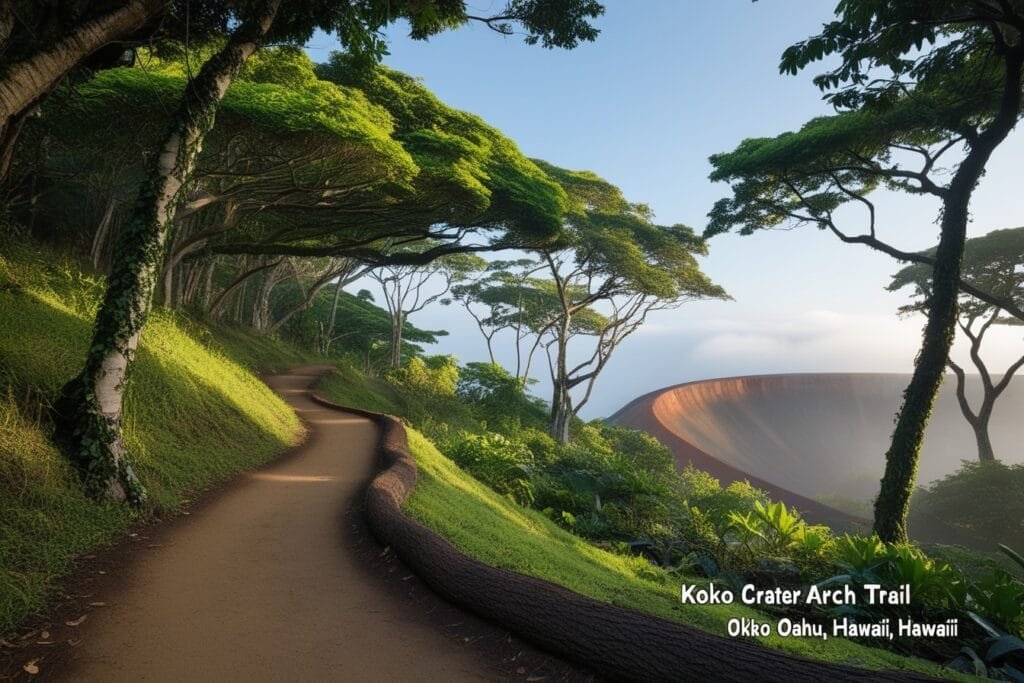
Nestled at the southeastern shore of the island of Oahu, the Koko Crater Arch Trail is a relatively simple trek that will leave a deep impression on hikers with breathtaking coastal views and the magnificent natural arch to leave a mark on. In comparison to the busier (and bustling) Koko Crater Stairs, this trail is a more relaxed, rugged trek, and thus is an ideal prospect because, at least in Hawaii, there is a treasure to be found.
The Koko Crater Arch Trail is a great trail, whether you are an avid hiker or you just want a nice sunrise hike with some pretty scenic views, worth snapping a photo. You will scuttle on top of lava formation, see panoramic views of the ocean, and stand under a huge arch carved by the ages of wind and sea. It is hardcore, it is uncivilized, and it is Oahu pure and simple – so the locals and those in the know (whoa! that includes me), love to vibe here.
This guide is where we will take you through all you need to know before you tie on your shoestrings and get on the trail. Whether it is getting there and what to bring to the best times to go, and what to see nearby, here are the reasons why this overlooked hike should be on your Hawaii list.
Where Is the Koko Crater Arch Trail? Navigate with Ease
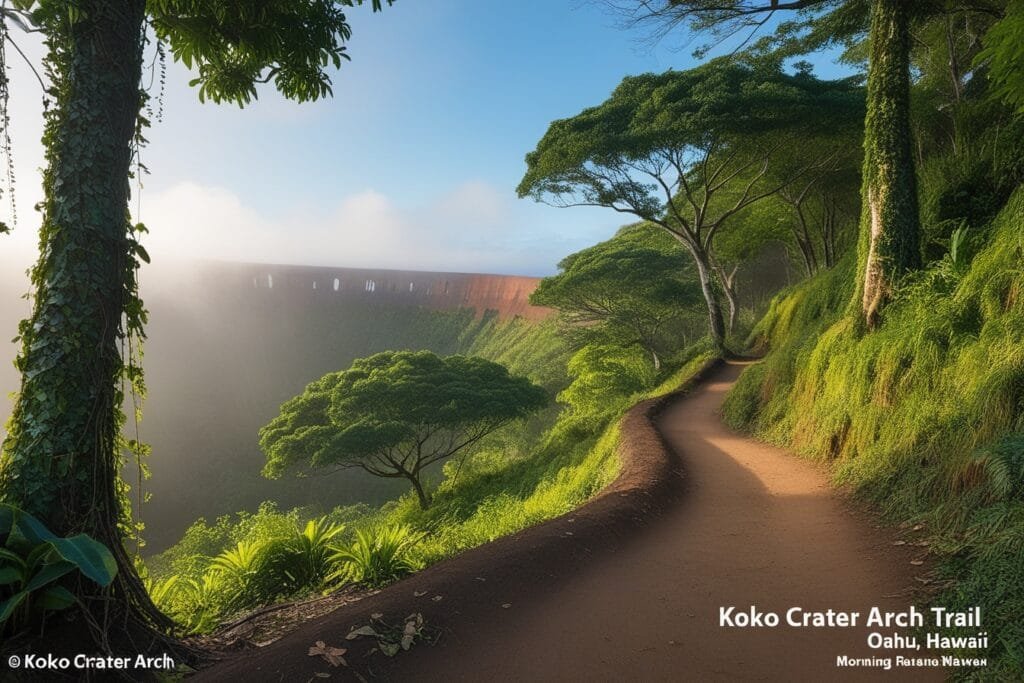
Koko Crater Arch Trail is situated on the eastern coast of the Oahu island but on the Southeastern side after the renowned Hanauma Bay Nature Preserve. It is a pretty short drive of 25 mins at most to Waikiki or central Honolulu, and an adventurous morning or afternoon. In order to reach it, it is necessary to proceed on Kalanianaole Highway (H-1 East) to Hawaii Kai.
And around the corner of the Hanauma Bay entrance, you would see on the right side of the road, close to a wide curve, a small parking lot, and this is where you will find it good and safe to park. It has no (official) trail sign; look up the slope, and you see a dirt path beginning up the mauka (mountain) side of the hill. They tell people to turn up early since parking spaces are very limited and the place gets hectic soon.
What Makes the Koko Crater Arch Trail So Special?
The best part about the Koko Crater Arch Trail is that the natural crater arch gouged out of volcanic stone achieves jaw-dropping beauty, which most people miss. The arch itself is standing out strongly against the background of the deep blue Pacific Ocean, providing one of the most peculiar shots on the Island. At many points along the path, you can take in panoramas across the coastline, Koko Head – and during the winter months, you may even see whales breach. It is not as steep or as long as the commonly seen Koko Crater Stairs, which are an assembly of a hundred (railway) steps. The perfect hike when you want something slightly more calm, yet adventurous, image-worthy.
Step-by-Step Hiking Experience: What to Expect on the Trail
Koko Crater is a short trail, just around 0.5 to 1 mile round trip; however, this trail is steep and scenic. The climb commences up a steep rock and loose gravel gradient, which is best tackled by proper footwear and some care. Once you are higher up, you may find very narrow ridges and areas that require you to go up using your hands against rocky inclinations. The main attraction on the trail, naturally enough, is the huge natural arch you will arrive at part of the way up.
Some will put themselves at a risk by crossing it, swinging their bikes or hiking, which can only be done with a lot of care or balance. The time that most people should expect to take will be in the range of 30 to 45 minutes, though you may end up taking more or less time depending on your slow/fast walk and how long you take to enjoy the sights.
Check Out: Mānoa Falls Trail Secrets: Discover the Hidden Paradise of Oahu’s Rainforest.
The Best Times to Hike the Koko Crater Arch Trail
To have the most pleasurable journey, one should go in the morning or afternoon to hike the Koko Crater Arch Trail. This is because, besides giving you the opportunity to evade the harsh midday sun, you are also at less risk of bumping into the crowds that come out during the cool hours. Morning sun is soft, golden, and a beautiful light in which photography would be gorgeous, particularly when the sun sets behind the ocean.
Nights may also be very pleasant, since the arch might be more blazing when the rays of the sun set in the burning hues. The hike can be safely done during the unique dry months (April to October) when the rocky, stony terrain of the trail becomes slippery and hazardous following rainfall. During winter, caution must be exercised more cautiously when wet and there is even more wind, particularly when near the ridge and near the arch.
What to Bring: Packing Essentials for a Safe Hike
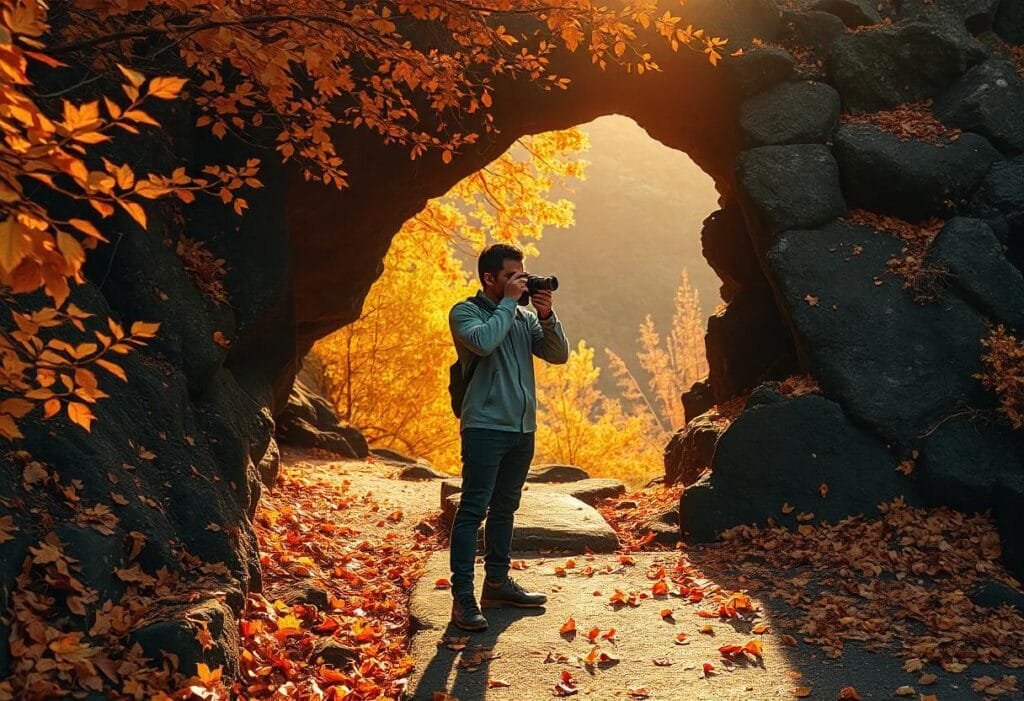
Some of the few things one has to carry around to stay safe and comfortable in the Koko Crater Arch Trail are good hiking shoes with good grips, a lot of water, a broad-brimmed hat, and sunscreen to keep out of the sun. A phone or camera is essential that capture the great ocean views and the volcanic arch itself.
Sanctioned elements such as light gloves are also optional, in case of scrambling on rocky areas, and small backpacks to carry snacks or a rain shell in case of emergencies. In the event of any wind- especially on the ridge- dress so as not to get caught and do not carry things that might blow away. With the right planning, this hike will be less difficult and much safer.
Safety Tips: Conquer the Trail Confidently
Koko Crater Arch Trail is not of great length; however, one should be more careful than he or she might expect. The stony and rugged nature demands one to be careful about the steps taken, especially on the drop-off and on the arch. The hiker would have to be cautious of rocks that are loosely placed, as they could lead to a slip or twist to the shoulder or ankle, and movement on the upward trail would require very slow and steady steps of movement.
Small kids, people with phobias of height, or a balance issue would not enjoy the trail. Moreover, you must not be too near the edges, and at the same time, you must take no risky shots on the arch since the priority in this situation is safety. By remaining on the specified route, a person avoids getting hurt and causes the minimum harm to the delicate volcanic land.
Is the Koko Crater Arch Trail Right for You?

And, in case you are a relatively fit novice, an adventure junki, or would like to hike in servitude a less traveled route with minimal miles and maximum reward, then the Koko Crater Arch Trail should be grand for you. It is not very long and it takes no special endurance, but it is steep and rough in climbing to be pleasant. Although individuals or couples are expected to appreciate the tranquility and the leeway associated with this trail, it cannot accommodate big groups because the paths are narrow, with a limited parking lot. Hikers who need a quick but hard to forgotten outdoor getaway to Honolulu should find this lurking gem nothing short of being rewarding.
Conclusion: Uncover the Magic of Koko Crater Arch Trail
The Koko Crater Arch Trail is one of the best, under-rated hikes in Oahu. Hidden in the southeastern side of the island, this little but memorable hike takes the traveler through gorgeous elevated seashores, a 100-foot natural rock arch, and quite the memorable outdoor adventure away from all the touristy attractions. The trail offers a well-rounded experience that will help you get in a quick workout, see an amazing photography spot, and relax above the Pacific, gently swaying in the wind.
The right preparation and understanding the trail will leave you with memories to put along the list of some of the most popular hikes in Hawaii. Decided to take a stroll through a trail that combines difficulty, scenery, and peace? Then the Koko Crater Arch Trail awaits you.
For more info: Click Here.
FAQs About Koko Crater Arch Trail
1. Koko Crater Arch Trail length?
The walk is a round trip of about 0.5-1 (Will depend on where you start and whether you venture out past the arch). It normally requires 30-60 minutes to complete.
2. Ares Koko Crater Arch Trail and Koko Head the same trail?
No, they are not token hikes. Koko Head Stairs is a steep hike up old railroad ties to the top, where one would find Koko Crater Arch Trail, a less steep and less well-groomed trail to a natural rock stack with views of the ocean.
3. Is the path child and novice trekker friendly?
Because the trail is steep, has loose rocks, and narrow paths around cliffs, it may be better suited to fit beginner-level participants and adults. Small children or people should not take it.

